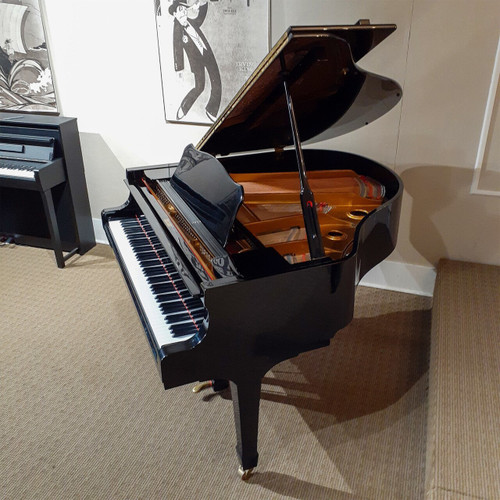
Unless carefully designed, the soundboard of a small piano can be much stiffer than that of a larger one due to its smaller surface area, and its vibrations are more easily stifled by careless bridge placement. Quite apart from the distinctness of the pitch, the bass tone can be deficient in other ways. Another area to pay attention to is the transition between the tenor and bass here, the lowest unwrapped treble strings can sometimes give off an indistinct or otherworldly-sounding pitch much different from the wrapped strings just below. (If you can no longer hum the note, the pitch is probably not clear enough to discern.) If this point on the keyboard is well within the normal range of the music you play, the piano may not give you the musical enjoyment you’re looking for. So when trying out a small piano, play each note in the bass to see how low you can go before the pitch becomes unclear. When the inharmonicity is extreme, however, each harmonic suggests a different fundamental, thus confusing the ear, which hears an indistinct pitch. (This happens to some extent with all pianos it’s just much worse in small ones.) The problem here is that the fundamental frequency of a bass string is weak in comparison to its harmonics, and the ear “hears” the pitch of the note largely by listening to the harmonics and inferring from them which fundamental would have produced them. The extra thickness makes them stiffer, causing the harmonics they produce to deviate from their theoretical frequencies, in a phenomenon known as inharmonicity. Normally among the longest in a piano, these copper-wrapped strings must be made thicker than normal to compensate for the length that the piano’s small size makes impossible. The place to begin is with the strings in the low bass. Of course, some are better than others, and some guidance in listening to and choosing one is advisable. I decided it was time to take another look at these instruments. Drawing near to find out what it was, I was amazed to discover that it was only 4′ 10″ long. This was brought home to me recently when, at a trade show, I heard from some distance a piano that sounded exceptionally lovely.


Piano-scaling software, advances in soundboard design, globalization, and the computerization of manufacturing have all contributed to the ability to produce grand pianos that are compact and inexpensive, yet still fully functional and satisfying to play. While much of the above is still true to some extent, great strides have been made in the intelligent design and construction of small pianos. The smallest of these instruments made by American manufacturers in the 1980s were referred to derisively by piano technicians as “piano-shaped objects.” To compete at this end of the market, manufacturers have traditionally needed to make and sell such pianos as inexpensively as possible, sometimes skimping on materials until the pianos just barely hold together. Given these pianos’ lack of musical qualities, most buyers have been understandably more interested in them as pieces of furniture than as musical instruments. The short cases of these pianos place severe constraints on string length and soundboard design, and often result in instruments with poor tone.

There was a time when, as they say, I wouldn’t have wrapped fish in a grand piano under five feet long.


 0 kommentar(er)
0 kommentar(er)
